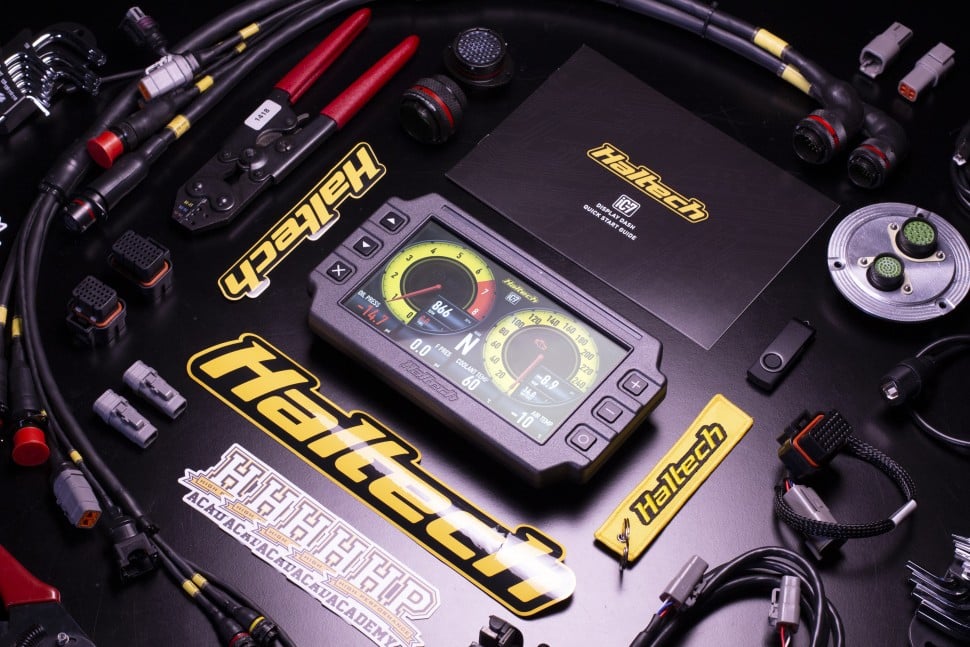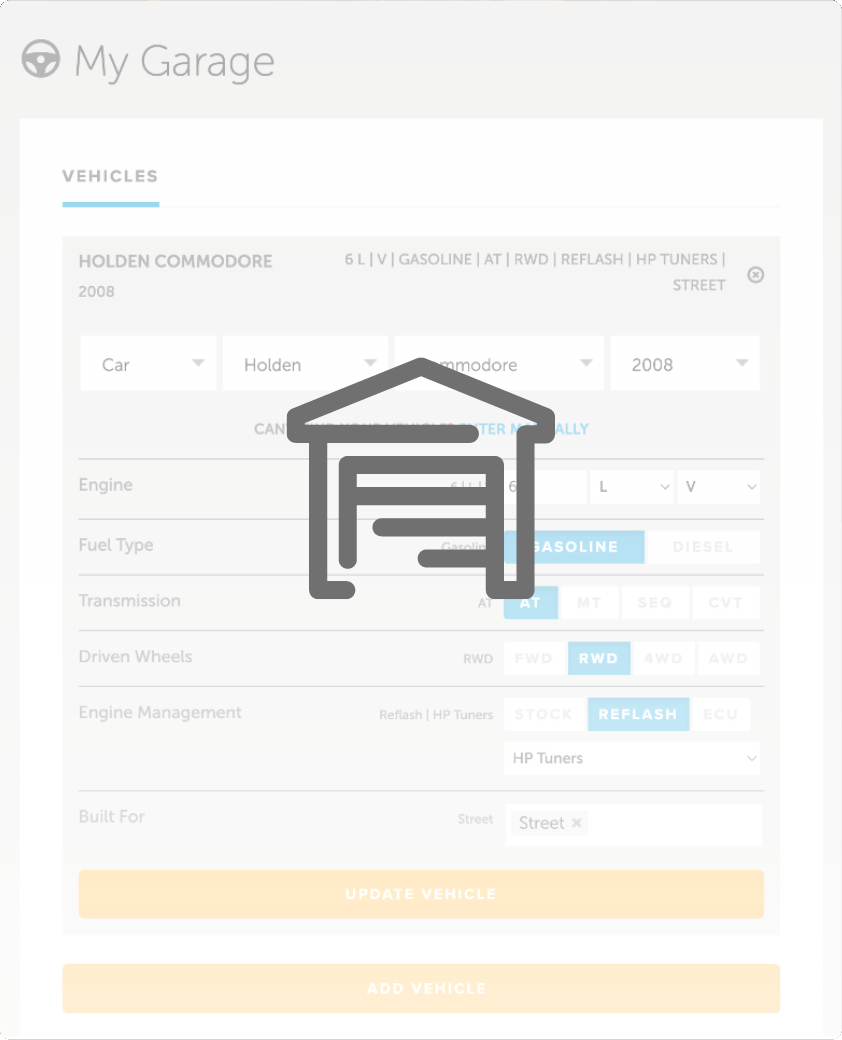| 00:00 |
With our scans and any other components set up and aligned in our workspace, we're ready to start designing our new part.
|
| 00:06 |
Obviously, this step is going to be completely different depending on what we're designing.
|
| 00:11 |
It could be a sheet metal bracket, a composite body panel, or for our example, a brake caliper bracket, which will be CNC machined from billet aluminium.
|
| 00:21 |
Again, remember that this isn't a CAD modelling course, so moving forward we'll be assuming you're at least already familiar with most of the tools, features and processes in this module.
|
| 00:31 |
If not, make sure to check out our 3D modelling and CAD for Motorsport course.
|
| 00:36 |
In this module, we're specifically interested in the considerations related to 3D scanning, and that includes working with mesh files.
|
| 00:44 |
For this example, we need a way of mounting the caliper to the upright, with a solution that's strong enough not to break and stiff enough not to flex, while still being relatively lightweight since it's unsprung mass.
|
| 00:58 |
The bracket will have M12 by 1.5 tapped holes for the two mounting points on the upright.
|
| 01:04 |
Although 7 16ths could be used instead to match the hardware used to mount the caliper.
|
| 01:10 |
And this would still work with the hole size on the upright.
|
| 01:14 |
Another alternative here is to use steel threaded inserts to give the threads some more strength, but we'll keep things simple here as that's just not our focus for this example.
|
| 01:24 |
The bracket will also have two holes with a slight amount of clearance for the 7 16ths mounting hardware into the threaded mounting points on the brake caliper.
|
| 01:33 |
So, back inside Fusion we're ready to start modelling and we could start by first creating a new component for the brake caliper bracket, but there's really no need in this case since we're just designing one new part, so we can do this inside the main design assembly.
|
| 01:48 |
So, what we're going to do is we're going to start by sketching on the back of the mounting bosses for the upright here.
|
| 01:56 |
And to start off we're just going to hit P on our keyboard and we're going to project the mounting bosses so we have the inner and outer circles here for those on the upright and also on the caliper mounting point there.
|
| 02:11 |
Keeping things really simple, what we're going to do next is select the line tool and then we're just going to connect the outer edges of each of these mounting bosses just with some straight lines.
|
| 02:24 |
And we're going to then use our tangent constraints to just set these tangent here at all the connecting points as well.
|
| 02:37 |
We can't use the same straight line between these two mounting points on the upright here, basically just because of the wheel speed sensor here and some of the geometry around that on the upright.
|
| 02:50 |
So, what we're going to do instead is just use a three point arc and then draw an arc between the two mounting bosses here and again use the tangent constraint to set those tangent as they meet the bosses.
|
| 03:06 |
And then finally to define that we're just going to set the diameter or the radius of that to about 60 millimetres or so just to roughly match the internal radius or diameter of the wheel hub really there.
|
| 03:27 |
So, we're also just going to use the offset tool from under our modify tab here and then we're just going to offset the inner circles here just by a slight amount, so 0.25 will give us about a half a mil overall clearance for the hardware into the brake caliper mounting points.
|
| 03:47 |
So, we're also going to need a few profiles here to just clear some of the space around the brake caliper mounting tabs.
|
| 03:55 |
And this is going to make a little bit more sense as we progress through and start creating the actual extruded 3D solid bodies here.
|
| 04:04 |
But what we'll do is we'll just start by making a larger circle around the top mounting tab here and yeah we'll set that at about 32 or so and then off that we'll just come make a tangent line come straight down to the edge here and we'll define that as well just with an angle off here.
|
| 04:30 |
110 looks like it roughly matches the angle of the tab there and then also use a tangent constraint between those two points and then use the trim tool to just remove anything that we don't need out of that.
|
| 04:47 |
And then what we're also going to do is just set a straight line between the two edges down here and again just dimension that to lock it in.
|
| 05:01 |
So, about 65 degrees looks about right and then if we just dimension that off one of the circles there we can fully define it.
|
| 05:10 |
And 18 looks like it'd be about halfway between those two points.
|
| 05:16 |
So, with that we can finish the sketch and the next step is going to be actually extruding the profile.
|
| 05:22 |
So, what we're going to do is we're going to start with the extrude tool and then we're going to select all the parts of the profile except for those that kinda around the areas that we just marked out around the caliper mounting tabs there.
|
| 05:38 |
But we're also going to fill in these holes because we're going to come back and use the hole tool soon to create tapped holes there.
|
| 05:46 |
The starting point for this can be off the profile plane, which is just on that surface of the upright.
|
| 05:53 |
Then we just want to come up to object and then select the surface on the brake caliper mounting point there as well.
|
| 06:03 |
And then we can just hit OK and we want to create that as a new body.
|
| 06:08 |
So, I'm just going to jump in here and set the physical material up for that body as I first created it so physical material and then I'm just going to choose aluminium here and that not only will allow us to calculate the weight of it soon based on the density, but it also just makes it a little bit brighter and easier to see in this case.
|
| 06:34 |
So, next we'll pick up the extrude tool again and then we'll need to show that sketch that we used originally because that just gets hidden.
|
| 06:45 |
It can be handy to just hide the body there while we select the sketch.
|
| 06:50 |
And again we want to fill in those holes.
|
| 06:54 |
Now, we want to select the other points as well and we're just going to make sure we leave the clearance holes unchecked.
|
| 07:05 |
Fill in that hole for the upright.
|
| 07:09 |
Same thing there, just leaving those two clearance holes.
|
| 07:12 |
Then we'll just make sure we show that body again.
|
| 07:16 |
And then for this we want the starting point to be on an object.
|
| 07:23 |
That object can just be the top of the current one or we could have selected the top of the brake caliper mounting bosses and then we're just going to bring that up another 10mm and that can join to that original body there and that'll just give us the thickness we need.
|
| 07:41 |
So, we'll just click there and then hit OK.
|
| 07:46 |
So, from here the next step is going to be creating the threaded holes.
|
| 07:51 |
So, we'll click the hole tool and then what we'll do is we'll just hide some of these other parts here so we can clearly see what we're doing and then we can use those sketch points in the centre there to position the holes.
|
| 08:08 |
For the distance we wanna go through all so it goes right through to the other side.
|
| 08:12 |
And that'll be a simple tapped hole, metric profile, but we're going to use M12 by 1.5 like we discussed earlier.
|
| 08:24 |
We don't need to model this, if we're getting this machined we'll just create a technical drawing to call out this thread detail here on that drawing.
|
| 08:33 |
If we model threads it can often, the complexity can slow down our processing because it adds quite a lot of complexity to the model.
|
| 08:41 |
So, we'll just click OK there.
|
| 08:44 |
And then all we really need to do to finish this off, we can hide that sketch and what we wanna do is just round any of these internal corners here or edges just to reduce any stress concentrations and we'll also round some of the external corners just slightly, so if we're working in this area around this part we're not going to end up cutting our hands or anything like that.
|
| 09:07 |
And it'll just give it a nice finished look as well.
|
| 09:16 |
So, with that we have a relatively simple , but what should be nice, strong and stiff as well bracket that will be quite easy to machine and we can just turn on our other components here, make those visible so we can clearly see how that's going to work.
|
| 09:32 |
And we can see that the hardware for mounting the bracket to the caliper, to the upright sorry, will actually have to be installed with the disc actually removed, which is a little bit of a pain in this case , but at least we can remove the hardware for the caliper, and that can just be fitted from the back here and that should make it fairly easy to just remove the caliper from the assembly if we ever need to service it or do anything on those lines.
|
| 10:04 |
And we could progress with this here and also do some lightening and take some pockets out of it, make some pockets in it, but of course that's going to come with some amount of weakening or removing stiffness from the part and that kind of detail's just really not necessary for this quick example.
|
| 10:24 |
What we can do though is right click here and go to properties and we can see that the mass of it, cos we set up the material as aluminium, would be about 260 grams in this case and that usually would be fairly accurate although the threads are not modelled.
|
| 10:39 |
So, from here the next step would probably be 3D printing this bracket, so we can kind of do a test fit with a prototype to make sure that the assembly all lines up nicely and we have the caliper nicely centred and perfectly aligned parallel with the disc and the edge of the pad also lines up as well.
|
| 10:57 |
And if we found any kind of differences there we could come back and make some modifications, improve that before we sent this part out to be machined.
|
| 11:06 |
In this case if we're 3D printing it as well, then it'd be best to clearance out these tapped holes here so we can just fix it through there with a nut and bolt in that case where it's not that good usually tapping into a 3D printed part.
|
| 11:22 |
So, let's quickly run over the key points found in this module before finishing up.
|
| 11:26 |
Even though mesh files are difficult to work with, if we've set up our workspace with components as well as extracted entities and created solid bodies for the functional features like the brake caliper mounts, then the design process can be as straightforward as any solid modelling project.
|
| 11:44 |
For our example, we had the upright and brake caliper set up in the correct position and alignment so it was simply just a matter of using solid modelling techniques to connect the mounting points and design a simple brake caliper bracket.
|





